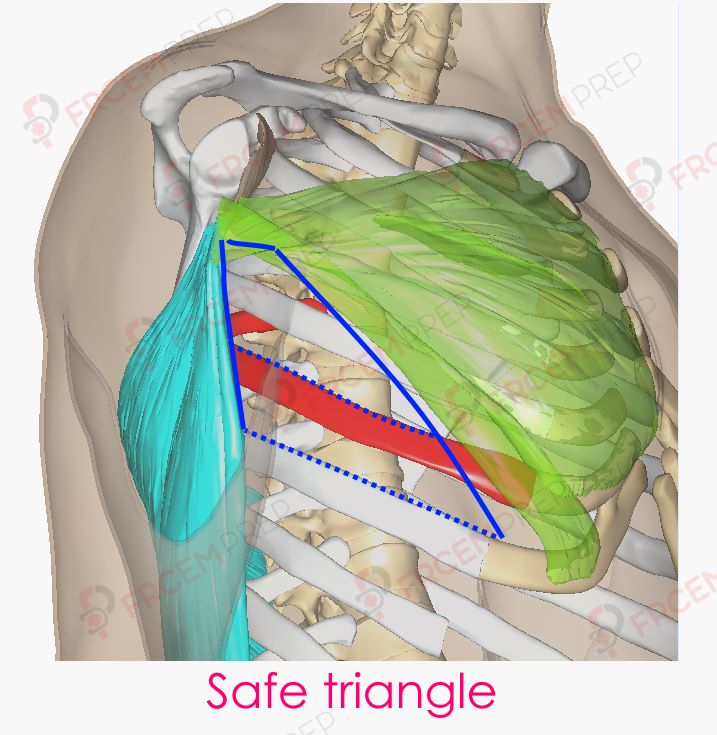Lymph drainage pattern to nodes based upon quadrants of the breast: its significance for patients presenting with breast lumps and/or lymphadenopathy.
Curriculum
Lymph drainage plays a major role in how some Cancers / Infections spread.
Lateral quadrant of breast drains to the anterior axillary (Pectoral group – Approximately 75% of drainage) nodes located posterior to the lower border of the pectoralis major muscle.
60% of Breast carcinomas involve upper lateral quadrant and they tend to spread to the axillary nodes.
Medial quadrants drain to the internal thoracic group of nodes (About 20% drainage) located along the internal thoracic artery.
Posteriorly the drainage goes to the posterior intercostal nodes (along the posterior intercostal arteries)

Modified from By Cancer Research UK – Original email from CRUK, CC BY-SA 4.0, https://commons.wikimedia.org/w/index.php?curid=34334130
Image shows the division of breast into quadrants.
Chest drain insertion
Appreciation of the landmarks for chest drain insertion
Curriculum
This exam would not expect you to know the procedure of chest drain insertion as such but you should know the landmarks of placement.
Safe triangle?

Safe triangle illustration Right side of Chest in view – Image modified from BodyParts3D, © The Database Center for Life Science licensed under CC Attribution-Share Alike 2.1 Japan
Safe triangle for chest drain insertion may not actually a triangle as such. It is bounded anteriorly by Pectoralis major (Green in the image), posteriorly by Latissimus dorsi (bluish/cyan color in the image), inferiorly by the 5th intercostal space (5th rib is shown in red), and superiorly by the axilla. The image shows
Incision : Identify the 5th intercostal and the midaxillary line. The skin incision is made in between the midaxillary and anterior axillary lines over a rib that is below the intercostal level selected for chest tube insertion (For example, if you choose 5th ICS for insertion, incision is given just above the 6th rib).
Depending on the indication of ICD, the ICS chosen might vary. Need not always be in 5th ICS. That is the reason why we used a dotted blue line in the image to mark the inferior boundary at 5th and 6th ICS.